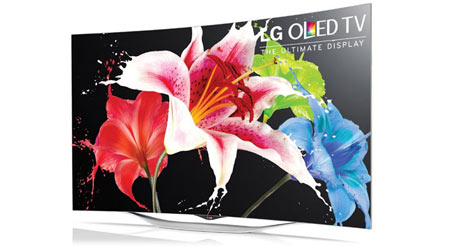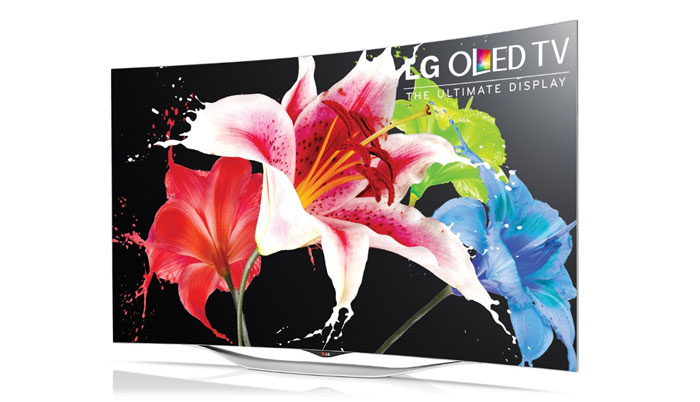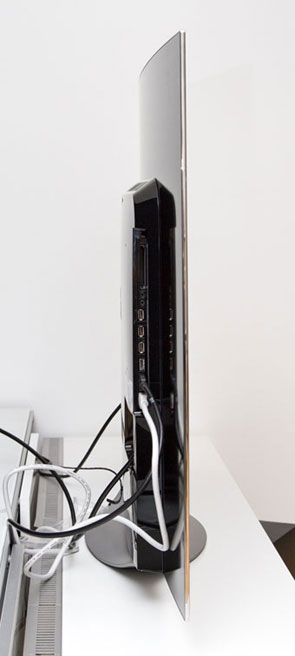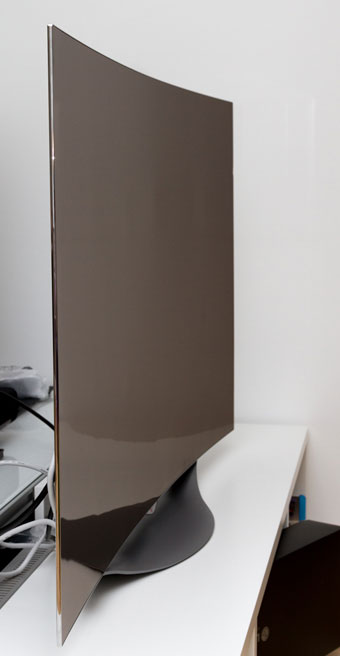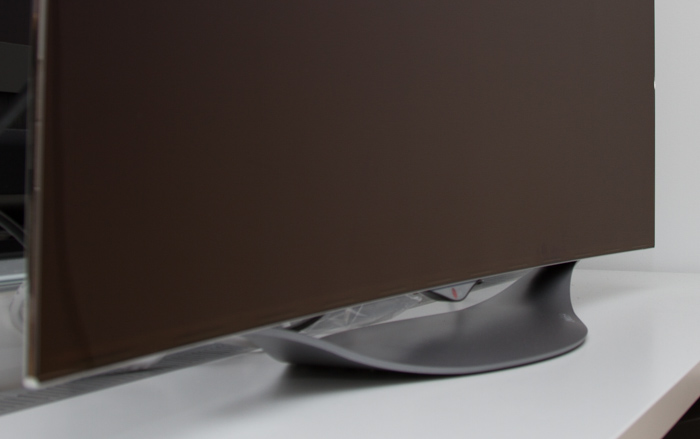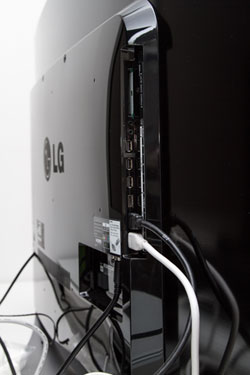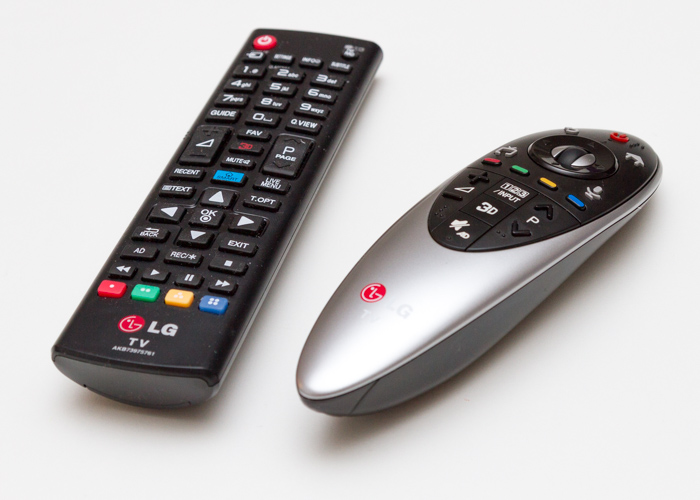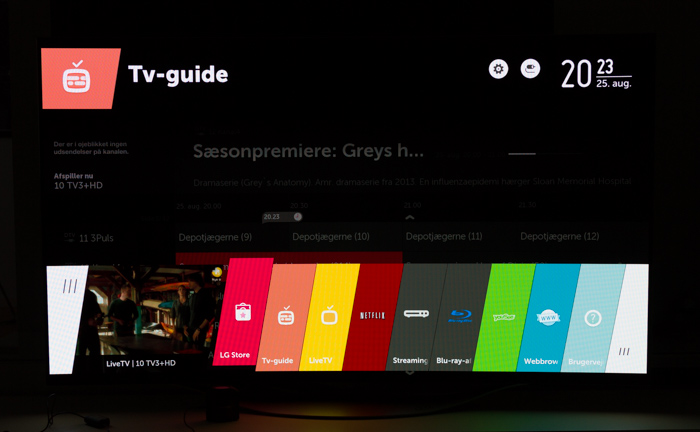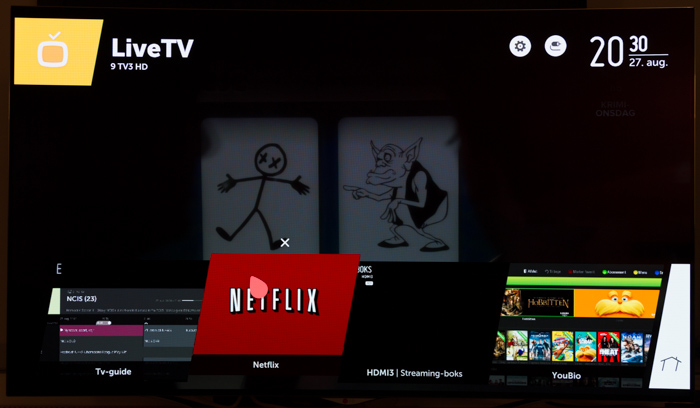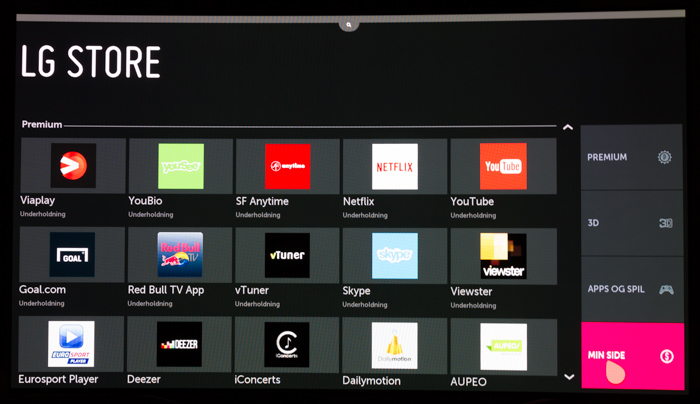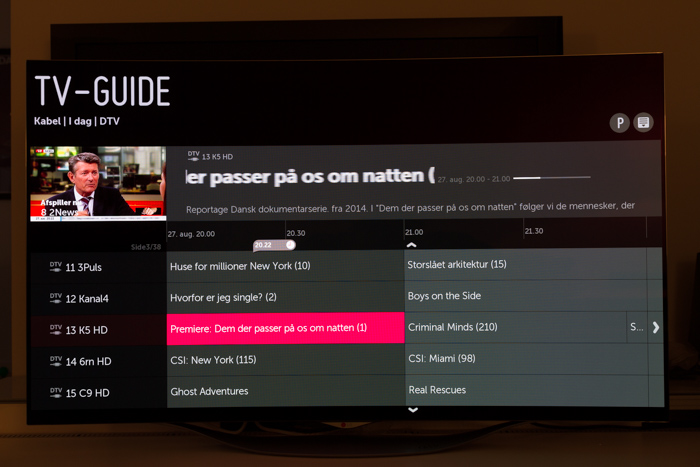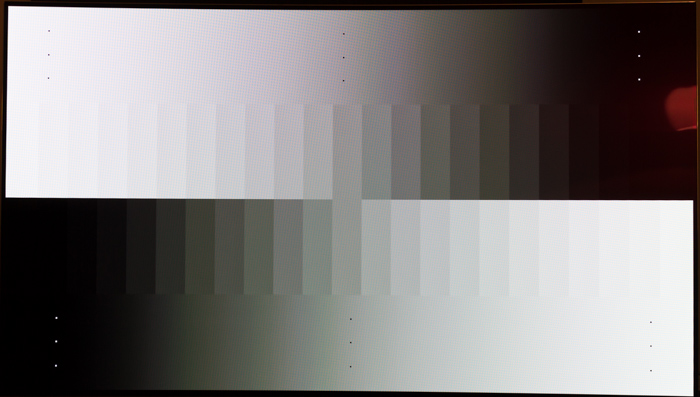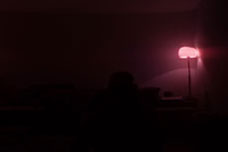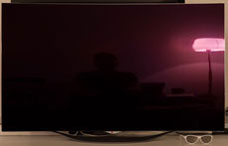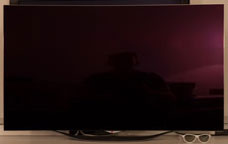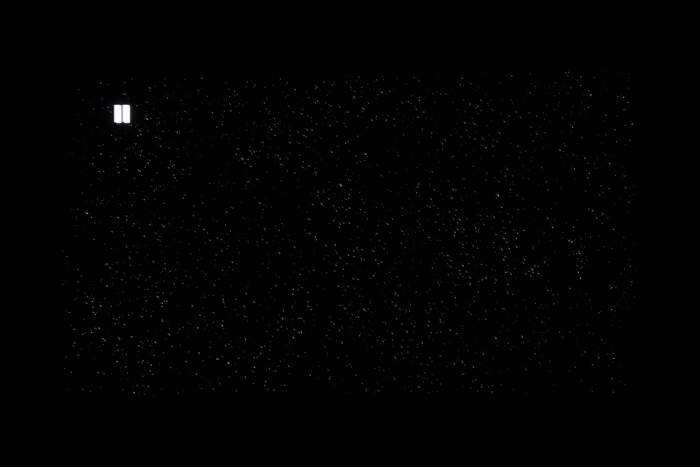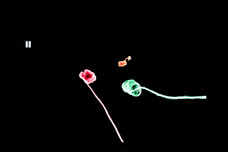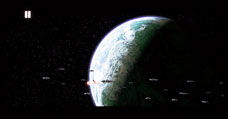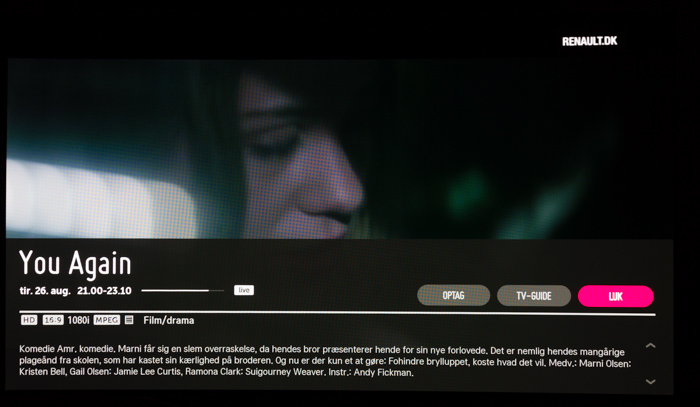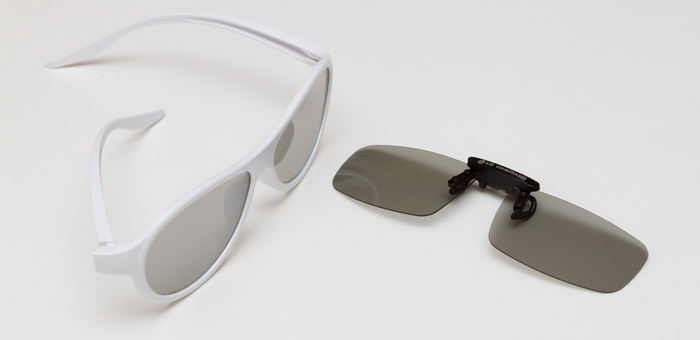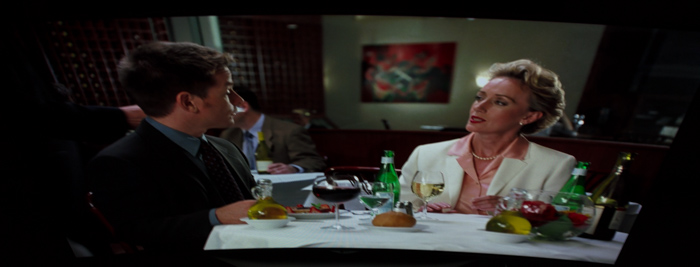Review: LG 55EC9300 (OLED TV)
Our first impressions - Test tools - Functionality - Power consumption - Calibration - Picture quality - PC & Media Center - Viewing angles - Sound - Conclusion - Debate
Last year, LG introduced the EA9800, which was the first OLED TV in a living room format. As you might have noticed by now, OLED technology is predicted a grand future. LG is now launching its second-generation OLED TV, a curved 55-inch 55EC9300 (55EC930V in Europe), at a much, much lower start price. 55EA9800 was introduced for $15,000, but the new 55EC9300 starts at just $3,500 and has already dropped below $3,000.
The big question is; has LG improved the OLED technology in just one year or is the new model actually a "cheap" OLED TV with worse performance? LG’s flat OLED TV currently holds our Reference Award, so EC9300 has something to live up to.
Note: we only had the TV for one week, so we were not able to examine all aspects of its functionality in depth. We have focused on examining picture quality
Subscribe to our Newsletter, RSS, Facebook or twitter to receive notice when new reviews are online.Specifications
55" Full HD (1920x1080) Curved OLED Passive 3D Stand (fixed)
Wall (VESA 400)(HxBxD) 75.3 x 122.5 x 2.5 cm (without stand) 14.7 kg HDMI (4x)
USB (3x)Optical
HDMI-ARC (1x)
HeadphonesStereo DVB T/T2/C/S2
WiFi (n-standard)MPEG4
HEVCwebOS MagicRemote (bluetooth)
Smartphone app (LG TV Remote)Manual
MagicRemotePrice and retailer:
| US retailer | UK retailer |
 |  |
First impressions
EC9300 follows in the footstep of the old EA9800 and is another curved 55-inch OLED TV with Full HD resolution. LG also launched new 4K OLED TVs at IFA, which will be coming out in a month or two.EC9300 still has a ultra-thin profile, but it has been freshened up a bit, and gone is the transparent plastic base with built-in speakers, instead replaced by a curved metal stand that gives it a more organic design. The speakers have been moved to the backside just like on most other ultra-thin TVs.
The TV is still paper-thin in all the areas where only the panel takes up space, but has has a few bulges here and there where electronics are tucked away. It is a pity that LG has not decided to move all electronics into an external box - an upgradable box - as the OLED TV would look crazy thin without the bulges.
The TV has side-mounted HDMI connectors so you need to bend your HDMI cables to make them come out at the bottom behind the base. Other input connectors face downwards and are grouped in a lowered area of the back plate, which made it a bit hard to plug in our shielded antenna cable.
LG says that it is possible to wall mount the OLED TV with a wire solution.
Test tools
We use the DVE disc and our own monitorTest. The software supports some of the traditional test patterns used to evaluate displays as well as some new and unique test patterns developed by the people here at FlatpanelsHD. We also use a Sony S7200 Blu-ray player.All contrast measurements are based on the ANSI methodology.
We have added a Leo Bodnar input lag tester to our equipment, which gives us a more accurate input lag readings. We would like to thank Nathan Kemp for sending us his tester before we received our own sample.
Functionality
One of the more notable changes in EC9300 compared to EA9800 is the new WebOS platform, which is the future TV platform from LG. WebOS is created with the motion-enabled Magic Remote as a centerpiece, so you pretty much have to use motion gestures to control the menus on-screen.In the box you will find two remote controls: a classic chaotic plastic block and the more ergonomic Magic Remote. The former is a joke on such an expensive TV and has so many buttons that it just confusing. Magic Remote is a slightly better concept, but the actual build quality leaves a lot to be desired and is no match to for example the quality of Bang & Olufsen’s BeoRemote One. It is possible to make the Magic Remote control third party products, but the list of compatible devices is too short to replace everything in your home, and even if it did, the few and very specific buttons on the Magic Remote would make it difficult to use it as a multi-purpose remote. It did not really work in practice.
WebOS is breath of fresh air to a market with far too many half-hearted TV platforms, and it largely resembles what we see on modern smartphones today. When you power it up you are presented with a menu bar at the bottom with apps that can be customized to include the things you use most, such as "Watch TV", "EPG", "Netflix" and so on. In the left side you see the latest apps or features you used (not the current) so you can quickly switch back to another active app.
If you scroll even further to the left, you see why webOS really stands out from the crowd; here is a list of active apps. WebOS is capable of multitasking, so you can jump directly into Netflix after having watched TV for a few minutes. Some other TV platforms can also hold one app in the memory, but LG takes it a step further. From the multitask menu you can also close all active apps, if the list has become too long. However, note that everything closes once the TV is turned off.
If you want access to all the installed apps, settings and more you can scroll to the right. The animations used when navigating the menus are also a fresh breath of air, and generally there is a lot going on for webOS, which helps give the platform the feel of a smartphone.
But webOS has one big drawback on EC9300, namely speed. The processor in EC9300 is either too slow or LG just needs to optimize better. You need some patience every day after turning on the TV and opening the first few apps. As an example the TV guide is regarded as an app that you have to manually start every time. This should surely happen automatically in the background so you do not have to wait 5 seconds just to load the TV guide.
A cool feature is the ability to mix TV channels from the three built-in TV tuners, but since we only used a DVB-C signal during testing we had no chance to try it. LG’s TVs do not have twin tuners, and unfortunately the TV guide only shows you five channels, which is too few to get a real overview of what is going on. For some strange reason, LG has also decided that the mini-preview video of the current channel starts only after you press the channel name. If the TV guide is important to you, you will probably find yourself disappointed with LG’s implementation in webOS.
Power consumption
 |  | |
| Stand-by | 0.1 W | 0.1 W |
| SD+HD | - | 148 W |
Even though OLED was predicted to reduce power consumption, EC9300 actually consumes a bit more power than the older EA9800, but it is important to remember that power consumption on OLED TVs depend on the proportion of bright colors on the screen. However, we still see a somewhat higher power consumption than comparable LED based LCD displays.
We have not done measurements for 3D power consumption as we felt it was more important to focus on examining picture quality during our short testing period.
Calibration
In the past, we have included the out-of-box measurements in the default color profile, but like in the Sony X900B review we have chosen to exclude them. You already know - the default color settings on pretty much any TV out there are crap. Do not use it. Period.Instead, let us focus on color reproduction after calibration. For this test we used the X-Rite ColorMunki for measurements together with the HCFR software.
To get the most out of EC9300 we started off by switched to the ISF profile. There are two, one called Night and one called Day. The ISF profiles also give you free reign to adjust whatever you like and to fine tune colors.
EC9300 offers two options to adjust colors, namely 2-point adjustment, which simply allows you to adjust the dark and bright end of respectively red, green and blue, as well as an advanced 20-point adjustment with 5% increments from 0% (black) to 100% (white).
It should be noted that we are using ABL-adjusted fields (Automatic Brightness Limiter) for calibrating EC9300, where the measurement spot only covers one tenth of the full screen area. The rest of the screen is neutral gray. This is necessary because OLED has an upper limit to how much power it can use and as a white color requires the most power, a full white background becomes dimmer than when white (or other bright colors) is reproduced in a smaller window on-screen. The brightness on a full white screen is only 60-80 cd/m2, but a spot measurement gave us over 200 cd/m2, with the same picture menu settings.
It is not possible to get a perfect RGB curve using only 2-point adjustments. If you look at the graph below you will see some issues around 60-70% white. It is necessary to use 20-point adjustment to correct this, but since 1) it takes a very long time, and 2) these settings are not transferable to your TV in any way, we have chosen to only utilize the 2-point adjustment.
If we take a look at the temperature curve we see that we hit 6500 Kelvin quite well, which is what we aim for, but the same small deviation that we saw on the RGB curve is also reflected here on the temperature curve at around 60-70%.
Below you see the gamma curve, which is a measurement of how light or dark a picture is, and here you see the same small deviation in the 60-70% range. But we still hit our 2.2 target quite nicely, which also ensures details in dark areas of picture.
Generally, the EC9300 is not an easy TV to calibrate. One of the challenges is that the size of measurement area affects the color measurements somewhat. So you have to do some work to find the right balance. And remember not to measure on full-screen patterns if you do it at home. What the graphs above do not show is how the picture looks in real life, which we will cover in the next section.
| Measurements | Out-of-box | Calibrated |
|---|---|---|
| Black level | 0.0 cd/m2 | 0.0 cd/m2 |
| Brightness | - cd/m2 | 60-200 cd/m2 |
| Contrast | - | - |
| Input lag | 141 ms | 47 ms (Game) |
| Power consumption | Out-of-box | Calibrated |
|---|---|---|
| On | - | 148 W |
| Stand-by | 0.1 W | - |
| Calibration | Setting | Value |
|---|---|---|
| General | Picture mode | ISF Expert2 |
| OLED light | 60 | |
| Contrast | 80 | |
| Brightness | 55 | |
| V/H Sharpness | 10 | |
| Color | 50 | |
| Color tone | 0 | |
| Advanced | Dynamic contrast | Off |
| Super Resolution | Off | |
| Color gamut | Standard | |
| Edge enhancer | Off | |
| Color filter | Off | |
| Noise reduction | Off | |
| MPEG noise reduction | Off | |
| Black level | Low | TruMotion | User (de-judder 0, de-blur 5) |
| Color temp | Warm2 | |
| Gamma | 2.2 | |
| RGB method | 2 point | |
| R high | -17 | |
| G high | +5 | |
| B high | -5 | |
| R low | +3 | |
| G low | 0 | |
| B low | +8 | |
| Energy saver | Off | |
| Picture format | Just scan |
Note: Please note that our calibration settings are based on a room with dimmed lights. If you want optimal settings for a brightly lit living room you should increase the setting "OLED light" to around 80 or higher.
Picture quality
LG 55EC9300, like its predecessors, has a glossy panel that reflects a mirror image of its surroundings. It acts like a dark mirror, but as we previously examined in our article about curved TVs the arch of the screen actually helps to reduce reflections. We have received a lot of questions regarding this, so below you see how it looks in real life.As the photo series illustrate, a curved TV has a point where reflections will be in focus, but as you move further away, reflections are spread out over the screen area. In the three photos we had a lamp turned on in a living room, and the photos have been taken from three distances, where the last is a "normal" seating distance of around 4 meters.
As you can see reflections are drastically reduced when you move to your normal seating distance. What you also might notice is that the curved of the LG TV is not flawless. It has to very small bumps on the front, but you only notice them when it is off.
Color gradation has not changed much compared to the previous model, and we still see some minor "bands" in our color gradient tests, so there is still some work to do for LG. However, color gradation is quite good, and it is almost impossible to find a TV without some minor issues in the area. All shades of black (and dark gray) and white could be distinguished, which is great.
If you have had a chance to look closely at an Ultra HD TV you might have noticed that there are no visible borders between pixels. This is not the case on Full HD TVs and not on LG’s OLED TV either, where you are able to spot the pixel borders from around 1-2 meters away (photo below did not capture the actual borders, just a moiré effect created by the camera because of the borders).
Where OLED really sets it apart from every other TV is when reproducing scenes with black areas. We often hear people asking us how much perfect black actually means in real life compared to near-perfect black, so we have created this little photo cavalcade for you that shows you what we saw in a dark living room.
As you can see, the TV blends perfectly into its surroundings, and because each pixel on an OLED TV can create all colors there is no halo light around for example starts or bright objects, which is the case on LCD-TV with local dimming. Everything is pure. It is a phenomenal way to watch a movie, and it is highly addictive.
We are always encouraged to examine retention / burn-in when we look at OLEDs, but just like with the previous LG OLED TVs we experienced no hint of retention at all, even after a long period of static images. However, we should note that we only had the TV for around one week so we never had a chance to do a real stress test.
If we move on to motion reproduction, we first notice that EC9300, like its predecessors, has no black-frame insertion or any other method of compensating for the issues of the sample-and-hold principle that LG’s OLED - like LCDs - is using. During fast movements in sports or action you can see that things tend to blur out a little bit and that detailing drops drastically, for example in our stress test. By setting de-blur in the TruMotion system (using Custom) to 5 we were able to restore some detailing, but it comes at a cost, since the setting introduces some minor artefacts in the image. On the previous model we were able to set de-blur to 0 to achieve an improvement, but this is not possible on EC9300.
Again, we must stress that this has nothing to do with how fast OLED displays can potentially be; it is solely a result of how LG has chosen to drive and control the panel and the number of pixels, and a result of how most TV series and movies are still using a very low frame rate, typically 24, 25 or 30 pictures per second. Games often go up to 60 pictures per second, but not always.
Speaking of gaming, input lag is an important factor when playing games on a game console. We measured input lag to 47 ms in the game mode and 141 ms with the calibrated settings.
Measuring contrast ratio on an OLED TV makes little sense because when black is perfect - when the panel emits no light at all - the contrast ratio is infinite. On the other hand, the white color is limited. The aforementioned ABL (automatic brightness limiter) circuit means that a full white background on LG’s OLED TV only reaches 60 cd/m2 (with our calibrated settings, around 80 cd/m2 at max brightness), but more than 200 cd/m2 when a white only makes up part of the image.
 | |
| Black level | 0.00 cd/m2 |
| Brightness | 60-200 cd/m2 |
| Contrast ratio | - |
As we demonstrated with our photos earlier, LG’s EC9300 has absolutely no problems with uneven light distribution or any related issues. There is no noise in black either (which is the case on many plasma TVs).
Lastly, we have on comment regarding TV signals on EC9300. Just like many other TVs nowadays, the de-interlacing chip is clearly not the best. This is mostly visible with poor TV signals. A good example is a news studio with rolling text at the bottom. Here, the TV struggles to keep up. Similarly, scaling of bad SD signals leaves something to be desired, and LG EC9300 is not on par with for example the Sony X900B, which we reviewed last week. LG EC9300 is clearly much more comfortable reproducing 1080p content.
We heard a very light buzzing from the back side of the TV, which increased when brightness on the screen increased. It was in no way as audible as on plasma TVs, but there was a faint humming from the power supply, which is audible starting from about a meter away from the TV - and only in a quiet room.
3D picture quality
Like all of LG’s TVs, EC9300 is using the passive 3D system, which in many ways is preferable to the active 3D system. The drawback of passive 3D is that you lose half the resolution in the vertical panel, which unfortunately is visible. The advantage is that the glasses are very cheap (2 glasses included + 2 clip-op glasses) and flicker-free. With 4K OLED TVs you should be able to get full 1080p 3D.The 3D implementation on EC9300 is neither better nor worse than on previous models, but it is clear that 3D is no longer a focus area for TV makers and it is not really being promoted. Crosstalk is at a minimum and color reproduction is fairly good.
PC and media center
In order to achieve 1:1 pixel mapping you need to select the aspect ratio called "Just scan" in the TV settings, and setting the input label to "PC".Viewing angles
One of clear advantages of OLED is the extremely wide viewing angles. There is really nothing to comment on at this point and this greatly distances OLED from LED based LCDs, especially if you have off-angle sofa seats or chairs in your living room.However, the curved panel has some unfortunate side effects when you move to the side, as the images look distorted to some extent. For the same reason, we wish that LG would stop introducing new curved panel without a flat companion, because we clearly know that you can get the same great picture quality from a flat panel.
Sound
The speakers in the EC930 are obviously not very powerful, and this translates into weak sound. It sounds like everything is trapped in a box and we will go as far as to saying that the speakers are unusable in some situations. There is really no reason to include a speaker system this bad. You simply need to invest in external speakers if you have plans to buy the EC9300 - either a soundbar or some kind of dedicated sound system.Conclusion
LG EC9300 (EC930V in Europe) is the second-generation OLED TV from the South Korean TV maker, and one of the biggest updates is the webOS platform. Unlike many other Smart TV platforms, webOS feels as the actual TV platform. It is integrated deep into everything you do on the TV, but unfortunately the speed of the processor is to slow make webOS shine.Picture quality on EC9300 reaches the same heights as previous OLED TVs, but we have to point out that motion reproduction is still one of the weak points, which is due to the non-implementation of techniques such as black-frame insertion. However, pretty much everything else is great. The black color is pitch black - perfect - which does wonders for the movie experience. You simply need to see it for yourself - preferably in a dark room to see how much it means. There is no other display technology that can match OLED in this area, and since LG is the only OLED TV maker at this point, no other brands can match them.
So in essence, LG has created a TV that is quite similar to last year’s EA9800 that we also reviewed, but with a refreshed TV platform in webOS. Our main complaint still stands; the curved form factor. Since LG also sells a flat OLED TV called EA8800 our Reference Award stays here, but the new 55EC9300 clearly deserves our Top Recommendations Award. We look forward to the 4K OLED TVs later this year.
Compare prices for LG EC930V on Pricerunner
Price and retailer:
| US retailer | UK retailer |
 |  |
Picture quality is assessed as overall picture quality, including color reproduction, image processing, contrast, motion etc.
Features is an evaluation of the built-in functionality such as apps, connector ports, tuners, recording capabilities, decoder formats, and how useful they are, as well as sound quality.
User experience is evaluated on the basis of user friendliness, speed, build quality, and day-to-day use of the TV.
Total score is weighted: 50% Picture quality, 25% Features, 25% User experience.
All scores are calculated based on a moving maximum target, defined by what we currently consider the best on market. It is then presented as a percentage. This means that a score will fall over time as new and better TVs set new standards. This allows you to compare scores across years. A score of 100% in a given category means that it is consider the best available product in this category to date.
Features is an evaluation of the built-in functionality such as apps, connector ports, tuners, recording capabilities, decoder formats, and how useful they are, as well as sound quality.
User experience is evaluated on the basis of user friendliness, speed, build quality, and day-to-day use of the TV.
Total score is weighted: 50% Picture quality, 25% Features, 25% User experience.
All scores are calculated based on a moving maximum target, defined by what we currently consider the best on market. It is then presented as a percentage. This means that a score will fall over time as new and better TVs set new standards. This allows you to compare scores across years. A score of 100% in a given category means that it is consider the best available product in this category to date.
Fantastic picture quality
Perfect black level
Colors
webOS is promising
Virtually perfect viewing angles
Curved panel
Motion reproduction not great
High input lag
webOS too slow
Poor sound quality


